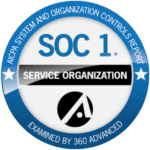Using Delivery Date Metrics to Measure Carrier Performance
Timely delivery is one of the most reliable indicators of carrier performance. Late shipments create ripple effects throughout the supply chain.
Key Benchmarks for Measuring Timeliness
Two delivery date benchmarks provide the clearest picture of a carrier’s service reliability (U.S. Bureau of Transportation Statistics):
- Appointment Date Adherence – Measures whether a carrier meets the confirmed appointment window. Missed appointments can cause delays at docks, disrupt labor scheduling, and impact downstream shipments.
- Estimated Delivery Date Accuracy – Compares the carrier’s stated delivery date, often transmitted via rating and transit-time systems such as SMC³, to the actual delivery date. Late arrivals against this benchmark are logged as service failures.
The Role of Automated TMS Tracking
A Transportation Management System that logs these events in real time eliminates the need for manual data collection. Integrated tracking captures:
- Late appointment arrivals
- Missed estimated delivery dates
- Service failures by carrier and mode
For example, Hatfield & Associates’ TMS automatically monitors carriers against both appointment dates and estimated delivery dates, logging each event in real time and building detailed performance histories.
Turning Data into Action
Performance reports based on delivery date metrics give shippers actionable insight to:
- Identify underperforming carriers
- Make routing and award decisions supported by historical data
- Enforce accountability through service level agreements
- Improve on-time delivery rates across the network
Embedding Accountability into Daily Operations
When carrier performance tracking is part of the core TMS workflow, the process becomes seamless. Data flows into existing dashboards and reports, ensuring decision-makers have current, objective metrics without additional work. Over time, this approach builds a data-driven culture around carrier selection and management, directly supporting service improvement initiatives.




